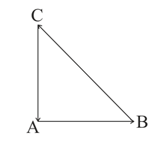Two billiard balls and , each of mass are moving in the opposite directions with a speed of . Each ball collides and rebounds at the same speed. If the collision lasts for , which of the following statements are true?

Important Questions on Newton's Laws of Motion I
A helicopter of mass rises with a vertical acceleration of . The total mass of the crew and passengers is . Give the magnitude and direction of
the force on the floor of the helicopter by the crew and passengers.
the action of the rotor of the helicopter on the surrounding air.
the force on the helicopter due to the surrounding air.
Find all the normal reactions between block and ground () and the accelerations of . (All surfaces are frictionless.)
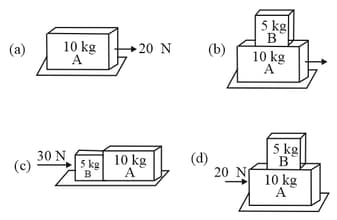
Two blocks are placed at rest on a smooth fixed inclined plane. Force acts on the block of mass and is parallel to the inclined plane, as shown in the figure. Both the blocks move up the incline. Then,
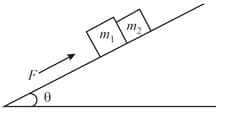
draw the free body diagrams of the blocks of masses and .
find the accelerations of the blocks of masses and .
find the normal reaction between the blocks of masses and .
Find out the accelerations of the blocks and the tensions in the strings.
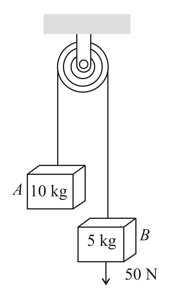
In which of the following cases, the magnitude of the acceleration of block will be maximum (Neglecting friction, the mass of the pulley and the string.)
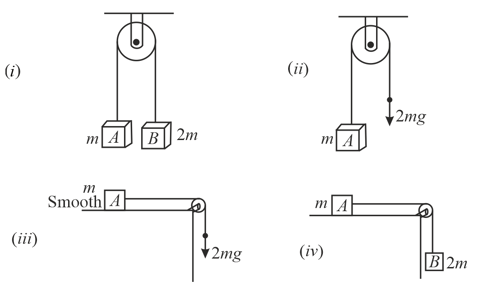
The block of mass is being pulled by a horizontal force , applied to a string, as shown in the figure (take ). The pulley is massless and is fixed at the edge of an immovable table. What is the value of the force exerted by the supporting table on the pulley (in Newton)?
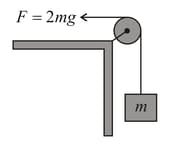
A particle of mass is momentarily at rest at at . It is acted upon by two forces and . It is given that and are unknown. The particle experiences a constant acceleration in the direction, as shown in the figure. Which third force, is required to make the acceleration of the particle zero? (Note: , and . Neglect the gravity.)
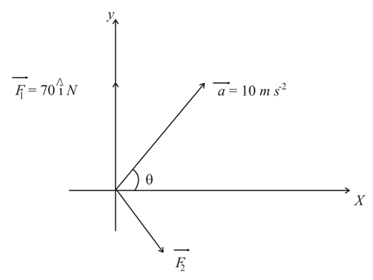
Three forces start acting simultaneously on a particle moving with velocity . These forces are represented in magnitude and direction by the three sides of triangle (as shown). The particle will now move with velocity
